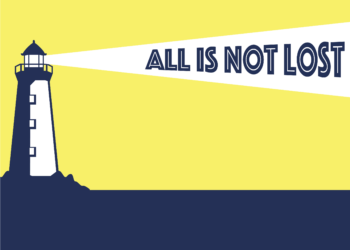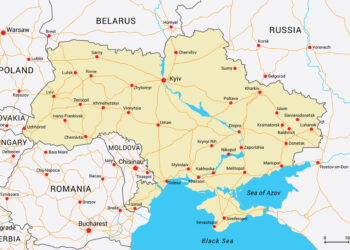Earlier this month, I wrote about Peter Thiel, the founder of PayPal, who worries that higher education has become the next economic bubble to burst. Back in February, I wrote about Malcolm Gladwell’s article in the New Yorker about college rankings and their inherent bias toward the wealthy.
Now, n+1 has published an article by Malcolm Harris that brings the spotlight again to the question of higher education as an economic bubble, but with some new angles and insights, including the disturbing projection by the US Department of Education that administrators will outnumber instructors at four-year, non-profit colleges. The effects of the game tilting from education to administration is predictable:
When you hire corporate managers, you get managed like a corporation, and the race for tuition dollars and grants . . . has become the driving objective. . . . The goal for large state universities and elite private colleges alike has ceased to be (if it ever was) building well-educated citizens. . . . Instead we have, in Bousquet’s words, “the entrepreneurial urges, vanity, and hobbyhorses of administrators: Digitize the curriculum! Build the best pool/golf course/stadium in the state! Bring more souls to God! Win the all-conference championship!” These expensive projects are all part of another cycle: corporate universities must be competitive in recruiting students who may become rich alumni, so they have to spend on attractive extras, which means they need more revenue, so they need more students paying higher tuition. For-profits aren’t the only ones consumed with selling product.
Harris takes for-profit universities to task, but saves his ire for non-profits, which he believes have drifted from their ideals of education to an ethos of exploitation — from interns (“students pay tuition in order to work for free”) to graduate students (“recent PhDs, overwhelmed with debt, have no choice but to accept insecure adjunct positions with wages kept down by the new crop of graduate student-workers”), they are, in Harris’ eyes, no longer providing the education their high tuitions purport will provide students with advantages later in life.
There are some facts sprinkled throughout the piece that will certainly burn themselves into your cerebrum:
- In August 2010, student loans surpassed credit cards as the nation’s single largest source of debt.
- Since 1978, the price of tuition at US colleges has increased over 900 percent, 650 points above inflation.
- Default rates for the class of 2008 are projected to reach 13.8%, about double the usual level.
Harris draws parallels between the US housing bubble and the higher education bubble, noting that there are already Student Loan Asset-Backed Securities (SLABS) being traded to the tune of US$250 billion in the last quarter of 2010. And there are federal guarantees. As Harris writes:
The loans and costs are caught in the kind of dangerous loop that occurs when lending becomes both profitable and seemingly risk-free: high and increasing college costs mean students need to take out more loans, more loans mean more securities lenders can package and sell, more selling means lenders can offer more loans with the capital they raise, which means colleges can continue to raise costs. The result is over $800 billion in outstanding student debt, over 30 percent of it securitized, and the federal government directly or indirectly on the hook for almost all of it.
For people depending on higher education for income, this bubble is something to watch. It is quickly becoming a meme, an idea that is evolving and spreading. As an interesting article in the Smithsonian describes it:
As the arc of information flow bends toward ever greater connectivity, memes evolve faster and spread farther. Their presence is felt if not seen in herd behavior, bank runs, informational cascades and financial bubbles.
In the past week alone, the Boston Globe (exploitation of adjuncts) and the Huffington Post (the debt burden) have picked up on the meme, and the idea is being syndicated from there.
As the public continues to notice, consider, and absorb these realities, and as this meme spreads, some form of accountability or correction seems inevitable. What form this takes may be depend largely on whether leaders take action to correct these trends now, before events spin out of control.
Discussion
6 Thoughts on "Concerns Over the Higher Education Bubble Continue to Grow and Evolve"
Yes, agreed, the corporatization of the university has produced many ills and distortions, but let’s also be fair. Tuitions have risen faster than inflation in part because of the many unfunded mandates from the federal government that have required universities to spend more (on facilities for handicapped, on hiring lawyers and accountants to take care of all the new legal requirements, etc.) and because of the steady decline in state support for higher education. I worked at Penn State for 20 years, and in that time the state’s support dropped from just under 20% of the operating budget to the current proposed 4% (half of what it is this year). And as to plush facilities, universities have been responding to market demands from students and parents who want these amenities. But we probably have reached a tipping point, and now we are seeing proposals like the one in my new adopted state of Texas for a $10,000 four-year degree.
Very interesting and not surprising. I see parents not investing in their own future to send kids to private colleges or kids disappointed when they can’t go to private colleges where they received acceptance and more young people living at home. Even folks I know who had scholarship for school, ended up needing financial aid to supplement living expenses and ended up in the same level of debt. Even the ones coming out with a six figure salary, but are over 40 or 50, still find the loans daunting–they have improved income but are saddled with this debt for several years.
A few decades back, even the more expensive schools were a stretch for a middle class family and many opted for state schools instead, but paying back the loans was still within the realm of sanity, even for a liberal arts graduate.
And I chuckled to myself–the tree on the DOE seal resembles a brain!
The fact that students can borrow $10,000 as easily as they can borrow $5,000 only provides institutions with a handy rationalization for raising tuition. Out-of-control increases in college costs are enabled by ultimately unsound student loan programs. Increasing costs and apparently decreasing quality create a double-whammy for higher education.
Unfortunately, the knee-jerk response to prove or improve quality by minutely assessing every aspect of the college experience is only adding expense and diverting resources that could actually be used to directly improve the quality of students’ experiences. Meaningful accountability is vital, but institutions, accrediting agencies, government leaders, and other stake-holders need to work for streamlined and efficient (as opposed to ever-more cumbersome) methods of assessment. Elaborate and mammoth accreditation and assessment exercises are likely to result in elaborate and mammoth (and largely narcissistic) documents rather than resulting in common-sense improvements for which the need is more often than not self-evident. Reminding ourselves that student loans pay for assessment might help us keep it in perspective.
Until the assessment pendulum starts to swing back in the direction of sanity, the double-whammy of decreasing quality and increasing costs supported by loans that won’t be paid back is likely to continue spiraling out of control.
Here’s my take on an alternative system of credentials.
Although it’s about how to promote credentials for higher ‘unschooling’, I did wonder: “why, if the “education” they provide is valued so highly, do most universities entrust teaching and development of instructional materials to those they value the least!”
Talk of the higher ed bubble has been out there for some time so I’m glad to see you bringing it to the attention of this audience. I wrote about it back in 2010 at “From the Bell Tower” and I don’t think the academic library community is paying much attention – at least not as much attention to a few librarians losing their jobs just recently. But if we don’t pay attention to the big picture, it’s only going to worsen.




